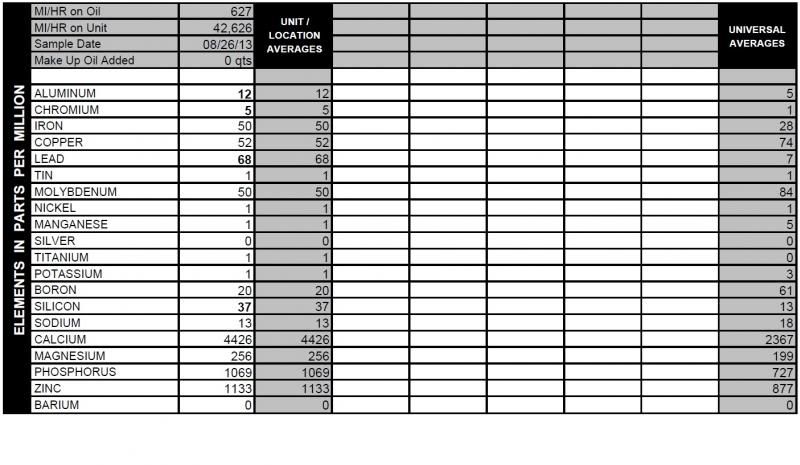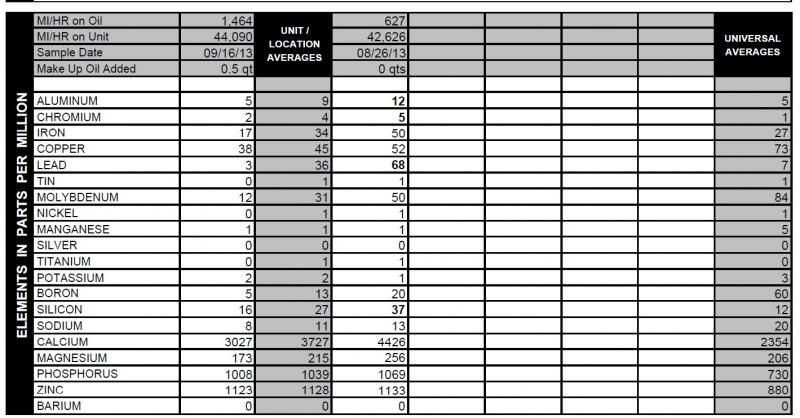Losing a little sleep over this. First time heads/cam swap on a bone stock LS2 with 40K miles at the time of swap. I never did an oil analysis prior to the modifications. When I started the car for the first time I ran it for about 30 minutes than dumped the oil and replaced it with fresh Joe Gibbs LS30 (5w-30). I ran the fresh oil for 627 miles, dumped the oil again, this time taking a sample to send to Blackstone. The oil analysis didn't come back as healthy as I had hoped; however Blackstone gives results based on a 4500 mile average sample on a normal running vehicle. I am hoping the high lead levels are a result of the cam swap and will be low at the next change interval, but at the same time I am concerned that grime may have got in between the cam and the bearings, and caused scoring. I can't find info anywhere online on a post modification oil analysis. Are any of these figures cause for concern or am I likely just worried over nothing?




